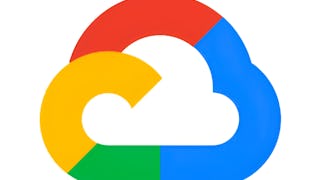This course covers BigQuery fundamentals for professionals who are familiar with SQL-based cloud data warehouses in Teradata and want to begin working in BigQuery. Through interactive lecture content and hands-on labs, you learn how to provision resources, create and share data assets, ingest data, and optimize query performance in BigQuery. Drawing upon your knowledge of Teradata, you also learn about similarities and differences between Teradata and BigQuery to help you get started with data warehouses in BigQuery.

Enjoy unlimited growth with a year of Coursera Plus for $199 (regularly $399). Save now.

What you'll learn
Describe BigQuery’s architecture, resource provisioning, and data definition model.
Create, secure, and share BigQuery data assets using best practices.
Implement common patterns and best practices for designing schemas, ingesting data, and querying data in BigQuery.
Compare and contrast the differences and commonalities between Teradata and BigQuery.
Skills you'll gain
Details to know

Add to your LinkedIn profile
6 assignments
See how employees at top companies are mastering in-demand skills

There are 6 modules in this course
This introductory module summarizes the key details of BigQuery architecture and resource provisioning including how BigQuery utilizes slots to execute SQL queries and workload management in BigQuery. Drawing upon your knowledge of Teradata, this module also provides a high-level overview of the similarities and differences between Teradata and BigQuery architecture and resource provisioning to help you get started with BigQuery.
What's included
1 reading1 assignment1 app item1 plugin
This module summarizes the key details of BigQuery’s resource hierarchy and data definition model, including how to create datasets and tables in BigQuery. Drawing upon your knowledge of Teradata, this module also provides a high-level overview of the similarities and differences between the Teradata and BigQuery resource hierarchies and primary data types to help you start working with data in BigQuery.
What's included
1 reading1 assignment
This module summarizes the key details of the Google Cloud Identity and Access Management (IAM) model, including how roles and permissions are applied to datasets and tables in BigQuery. Drawing upon your knowledge of Teradata, this module also provides a high-level overview of the similarities and differences in roles and permissions between Teradata and BigQuery to help you start securing and sharing your data in BigQuery.
What's included
1 reading1 assignment1 app item
This module summarizes the primary options and best practices for ingesting data into BigQuery, including batch data loading, streaming ingestion, and queries to external data sources. Drawing upon your knowledge of Teradata, this module also provides a high-level overview of the similarities and differences in data ingestion options between Teradata and BigQuery to help you start reading and loading your data into BigQuery.
What's included
1 reading1 assignment
This module summarizes common patterns and best practices for designing and optimizing table schemas in BigQuery, including the use of nested and repeated fields, partitioning, and clustering. Drawing upon your knowledge of Teradata, this module also provides a high-level overview of the similarities and differences in schema usage and design between Teradata and BigQuery to help you start structuring and optimizing your data in BigQuery.
What's included
1 reading1 assignment1 app item
This module summarizes the key features and operations of the Google Standard SQL dialect used in BigQuery and best practices for optimizing query performance and controlling costs in BigQuery. Drawing upon your knowledge of Teradata, this module also provides a high-level overview of the similarities and differences in the SQL dialects and features between Teradata and BigQuery to help you start running and optimizing queries in BigQuery.
What's included
1 reading1 assignment1 app item
Instructor

Offered by
Explore more from Cloud Computing
 Status: Preview
Status: PreviewGoogle Cloud

Google Cloud
 Status: Preview
Status: PreviewStarweaver
Why people choose Coursera for their career




Frequently asked questions
To access the course materials, assignments and to earn a Certificate, you will need to purchase the Certificate experience when you enroll in a course. You can try a Free Trial instead, or apply for Financial Aid. The course may offer 'Full Course, No Certificate' instead. This option lets you see all course materials, submit required assessments, and get a final grade. This also means that you will not be able to purchase a Certificate experience.
When you purchase a Certificate you get access to all course materials, including graded assignments. Upon completing the course, your electronic Certificate will be added to your Accomplishments page - from there, you can print your Certificate or add it to your LinkedIn profile.
Yes. In select learning programs, you can apply for financial aid or a scholarship if you can’t afford the enrollment fee. If fin aid or scholarship is available for your learning program selection, you’ll find a link to apply on the description page.
More questions
Financial aid available,






